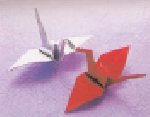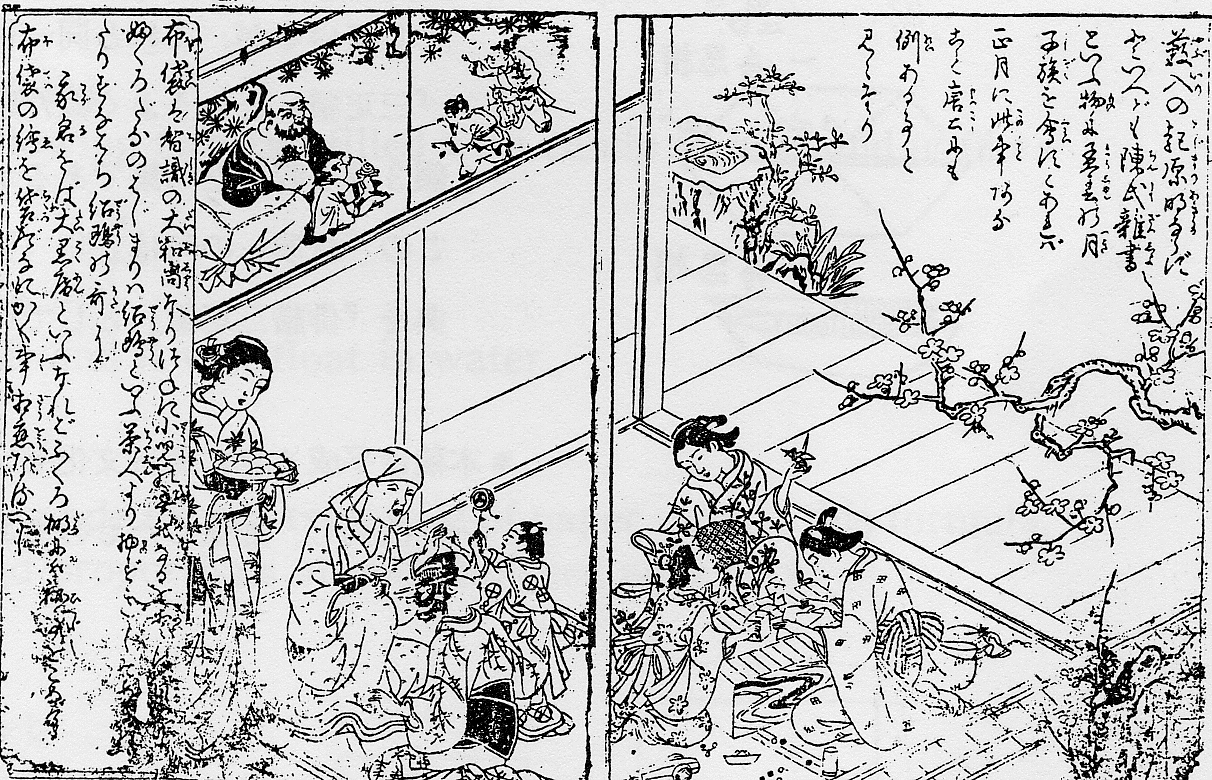nqhf`lh
Japanese
 It is unclear when origami, or the art of paper-folding, originated and developed in Japan. However, what is known is that from the old days, letters and paper to wrap items in were folded. A well-regulated lifestyle came with the advent of samurai society which gave rise to the art of paper folding for practical and formal purposes.
It is unclear when origami, or the art of paper-folding, originated and developed in Japan. However, what is known is that from the old days, letters and paper to wrap items in were folded. A well-regulated lifestyle came with the advent of samurai society which gave rise to the art of paper folding for practical and formal purposes.
Origami made in the shapes of, for example, a crane or helmet is regarded as origami for pure enjoyment. However, these were probably once made for the purpose of bearing illnesses or misfortunes in place of people. They began to be made sometime around the beginning of the Edo period (1600-1868) which coincided with an age in which mass-produced low-priced paper came to be widely used among commoners.
Also, a scene in which people enjoy origami(folding paper) is depicted in Ukiyoe, or a wood block print, in the Edo period. ( Ukiyoe printer CSukenobu Nishikawa; "Ehon Hana no Kagami" published in 1748 ) Origami rapidly became widespread during this period.
During the Meiji period (1868-1912), origami was used as a tool in kindergarten and elementary school levels. Japan's origami was greatly influenced by Friedrich Wilhelm August Frobel (1782-1852), a mid-nineteenth century German educator, whose method of teaching derived from European traditional origami, which further developed into folding to make various geometrical shapes, and was widely adopted particularly in the Japanese kindergartens.
Today, origami has spread all over the world, and a number of origamians and origami dilettantes are producing various unique works influenced by their national character. Amazingly enough each piece you make will have its own distinctive character. In this way, origami possesses a fundamental expressive beauty. This concept of beauty arising within a simple structure is considered to be the essence of Japanese culture.
Let us all express our gratitude for this precious gift which has been passed down from mothers to their daughters and sons for many generations in Japan.

Back
@@@@@
 It is unclear when origami, or the art of paper-folding, originated and developed in Japan. However, what is known is that from the old days, letters and paper to wrap items in were folded. A well-regulated lifestyle came with the advent of samurai society which gave rise to the art of paper folding for practical and formal purposes.
It is unclear when origami, or the art of paper-folding, originated and developed in Japan. However, what is known is that from the old days, letters and paper to wrap items in were folded. A well-regulated lifestyle came with the advent of samurai society which gave rise to the art of paper folding for practical and formal purposes.